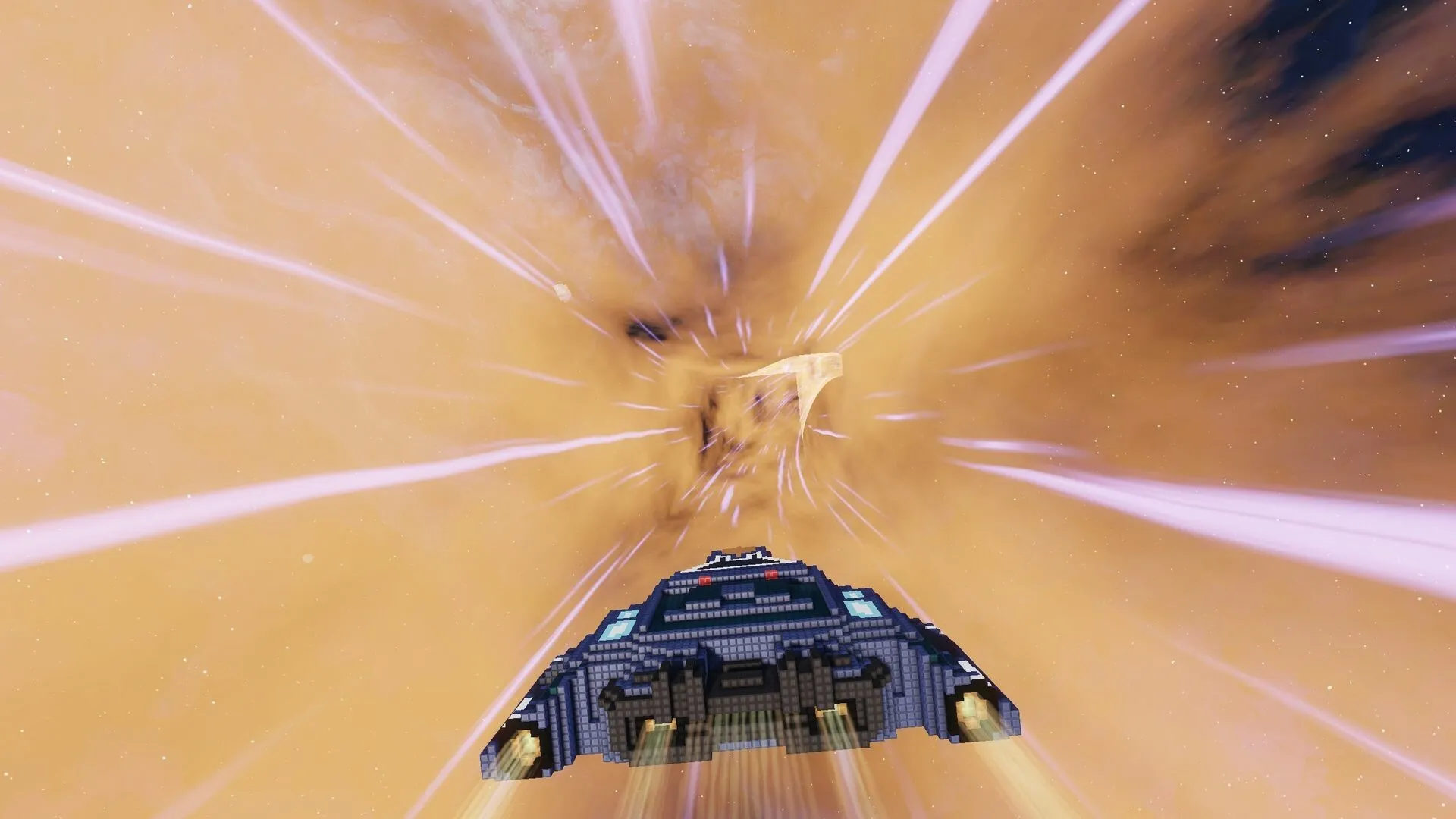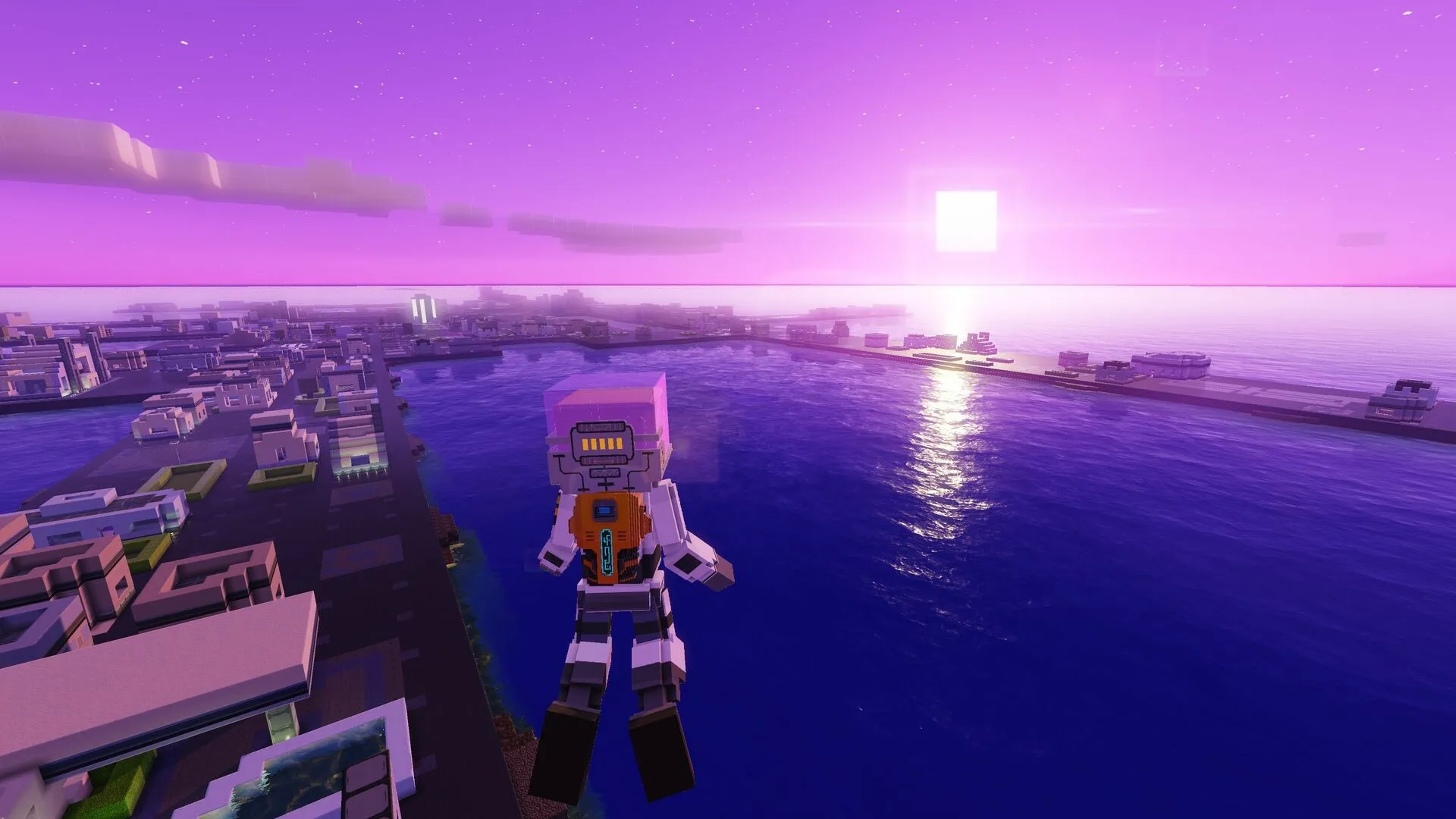The cosmos of sandbox crafting games is wide, and it’s a special kind of thrill when a new star appears, inviting a closer look with the promise of something thoughtfully constructed. Cubic Odyssey emerges with this quiet confidence, suggesting that building worlds and telling stories can be part of the same grand celestial dance. This creation is, fundamentally, an expansive space adventure rendered in those familiar, tactile voxels.
Consider the deep satisfaction of shaping an environment, piece by piece, then imagine that intimate creative energy fueling expeditions across unknown star systems. What might stir the spirit here is the game’s aspiration to thread a genuine narrative current through your explorations, aiming to give purpose to your constructions.
The developers paint on a vast canvas of procedural generation, meaning each player’s galaxy holds its own specific mysteries, its own vistas. You are an explorer here, not simply a resource gatherer; an agent entrusted with a purpose that seeks to leave a mark against the silent backdrop of space. From the outset, there’s this palpable thrum of potential: the chance to forge not merely outposts, but affecting personal tales under alien skies.
We’ll be looking closely at how you traverse these star-strewn landscapes, gather what you need to survive and build, raise structures that speak of your passage, and follow that central thread of duty. It’s about how these parts fit together, or perhaps where they show their seams.
The Weight of Worlds: Survival and Growth in Cubic Odyssey
Many games ask you to survive; Cubic Odyssey wants you to feel the precariousness of that existence, especially at first. It’s not merely about fending off hunger. Alien atmospheres, radiation, and extreme temperatures are constant pressures, managed via space suit enhancements that might offer faster movement or more air. But the true early crucible is the battery system.
These cells power everything: tools, jetpack, ship, even your ability to run. Initially, they don’t stack, creating a palpable tension and an inventory puzzle that can feel genuinely restrictive. It’s a design that forces hard choices.
Then, as you grow, batteries become more common from fallen enemies, and that early desperation fades. This arc from scarcity to sufficiency deeply colors your initial expeditions. With item durability tied only to player death, setbacks carry a distinct sting, a sharp reminder of your vulnerability.
This climb from vulnerability threads through combat as well. Encounters are first-person, with a selection of futuristic firearms, melee tools, and deployable aids like drones. You’ll face creatures tied to their worlds and ancient machines, with significant boss battles marking progress. Opponents often use gear similar to yours, making engagements feel reactive rather than predictable.
Early fights can be harsh, mirroring your initial weakness, while space combat also taxes your resources, as ship weapons consume those vital batteries. Your capabilities expand through a skill system where practice improves performance – using your mining tool enhances its effectiveness, for example. This growth unlocks the ability to craft superior tools, like the essential Darkness Purifier or better resource printers.
The opening stages are a steep climb, a period of acquainting yourself with many interlocking mechanics and gathering fundamental equipment. However, the feeling of establishing a working base or crafting a vital piece of gear after such focused effort is substantial. It’s this earned competence, born from early trials, that begins to ground your presence in this universe.
Blueprints of the Self: Expression Through Creation in Cubic Odyssey
There’s a particular kind of magic when a game hands you an extensive set of construction tools, and Cubic Odyssey’s voxel system feels both intuitive enough to invite experimentation and deep enough for considerable complexity. It’s like being given access to an infinite supply of cosmic LEGOs.
The creative scope is broad: from simple tools and components, one can assemble land vehicles, automated drones, and even fully functional starships, specifying details like engines, solar panels, and vital fuel tanks. Bases become intensely personal affairs; you can paint individual blocks, rig up automated lighting or doors, and generally sculpt living spaces that reflect your own sci-fi sensibilities. For those truly ambitious projects, a blueprint system allows for saving and replicating intricate designs, a thoughtful feature that encourages players to think big.
Naturally, realizing these architectural dreams demands resources. Much time is spent on planets mining diverse minerals, gathering unique flora, or collecting fundamentals like stone and water. The crafting process itself is often a multi-step chain: dirt must become clay, then perhaps bricks; complex devices like Capacitors might require several refined ores in sequence.
The ability to pin a single recipe offers some guidance. This significant demand for materials can occasionally make certain projects feel like exercises in patience, a stretch of dedicated effort before the visual and functional reward. However, this very effort tends to magnify the sense of achievement when a complex design finally materializes or a sprawling outpost becomes self-sustaining.
It’s one thing to customize your explorer’s suit and hairstyle; it’s another entirely to pilot a starship of your own making – perhaps a loving homage to a cinematic favorite – knowing every component was earned. These constructions are more than shelters or vehicles; they are the tangible results of your persistence, a personal signature etched into the game’s vast canvas.
Echoes in the Void: Discovery and Story in Cubic Odyssey
Moving through Cubic Odyssey’s galaxy has a distinct charm. Hopping between systems to explore procedurally generated planets feels seamless, with no loading screens to break the spell of descent. Each planet is a focused biome – toxic swamp, icy canyon – with unique flora and resources.
The visual of planets as distant cubes that warp on approach is memorable. Exploration is encouraged by more than scenery; discovering caves, relics, crashed ships, or upgrades feels like finding puzzle pieces. Day-night cycles and dynamic weather animate these compact worlds.
Woven into this is the ‘Red Darkness,’ a corruption consuming worlds, which your interstellar knight character is driven to confront. The story unfolds organically as you unearth alien tablets, lost logs in derelict bases, or cryptic signals, piecing together a lost civilization’s fate. Cleansing sacred temples offers a tangible way to fight back. This approach provides meaningful backdrop and motivation without rigidly dictating your actions, letting secrets unfurl at your pace.
This respect for player pacing extends to the freedom offered. Pursue the main quest or engage in interstellar trade, hunt pirates (their defeat can repopulate worlds with colonists offering tasks), or expand your bases. A robot companion gives optional hints, while an inventory filter, ore-scanners, and fast travel via warp portals (plus a ship teleport, power permitting) make your galactic life surprisingly fluid.
These aren’t just activities; they’re potential narratives you author. The galaxy, then, becomes less a pre-written saga and more a stage, waiting for your character’s distinct story to echo across its procedurally drawn voids.
Cosmic Canvases and Shared Sagas: The Sensory World of Cubic Odyssey
Cubic Odyssey pairs voxel charm with striking technical details. Planetary skies impress, lighting is effective, and weather adds dynamism. The signature planet-warp visual upon approach remains a highlight. Character models are simple yet expressive with customization, fitting the consistent art style of constructions.
Performance is mostly smooth. The sound design is also well-crafted: a dynamic soundtrack adapts to your activity, while subtle cues like the ‘PING’ for extra resources or distinct enemy sounds create a surprisingly cinematic and readable auditory environment. Accessibility options are a thoughtful touch.
Sharing this galaxy is possible with up to four-player co-op, allowing for joint base building, shared boss fights, and even specific team dungeons. While progression sync for all players has some current hitches (which developers are addressing), the foundation for cooperative stories—bolstered by cross-play and communication tools—is firmly laid.
Plans for community servers and mods suggest a long view. Playing together inevitably transforms solitary expeditions into collective chronicles, altering how each player’s narrative is forged and remembered.
The Review
Cubic Odyssey
Cubic Odyssey is a considerable undertaking, one that asks for patience through its early trials but rewards perseverance with a canvas for truly personal cosmic sagas. Its blend of deep construction, driven exploration, and emergent storytelling, set against an atmospheric audiovisual backdrop, makes for a memorable, if sometimes demanding, creative experience. A thoughtful piece of interactive art for the persistent spacefarer.
PROS
- Extensive, expressive construction and customization suite.
- Atmospheric world design with strong audiovisual support.
- Satisfying loop of exploration, discovery, and player-authored narrative.
- Ambitious integration of diverse gameplay systems.
- Seamless transitions between space and planet surfaces.
CONS
- Steep initial learning curve and resource demands can feel like a slog.
- Battery system can be particularly frustrating in early stages.
- Multiplayer progression sync currently has limitations.
- Some mechanics (e.g., complex crafting chains) might feel laborious to some.


















































